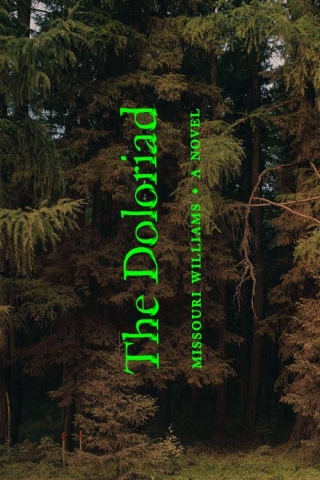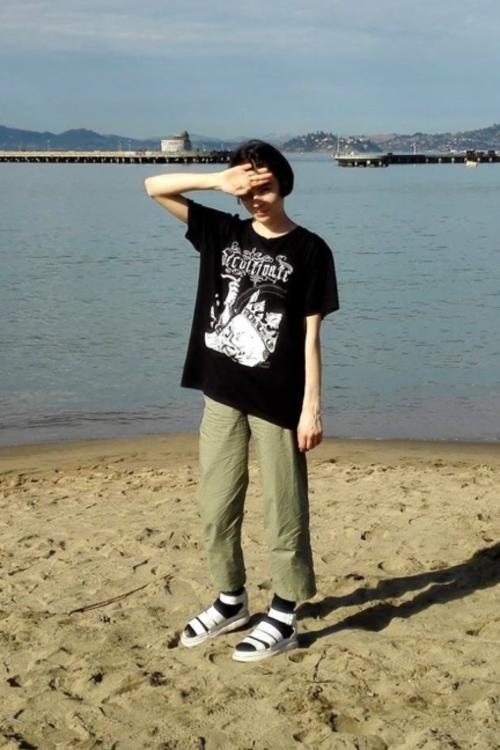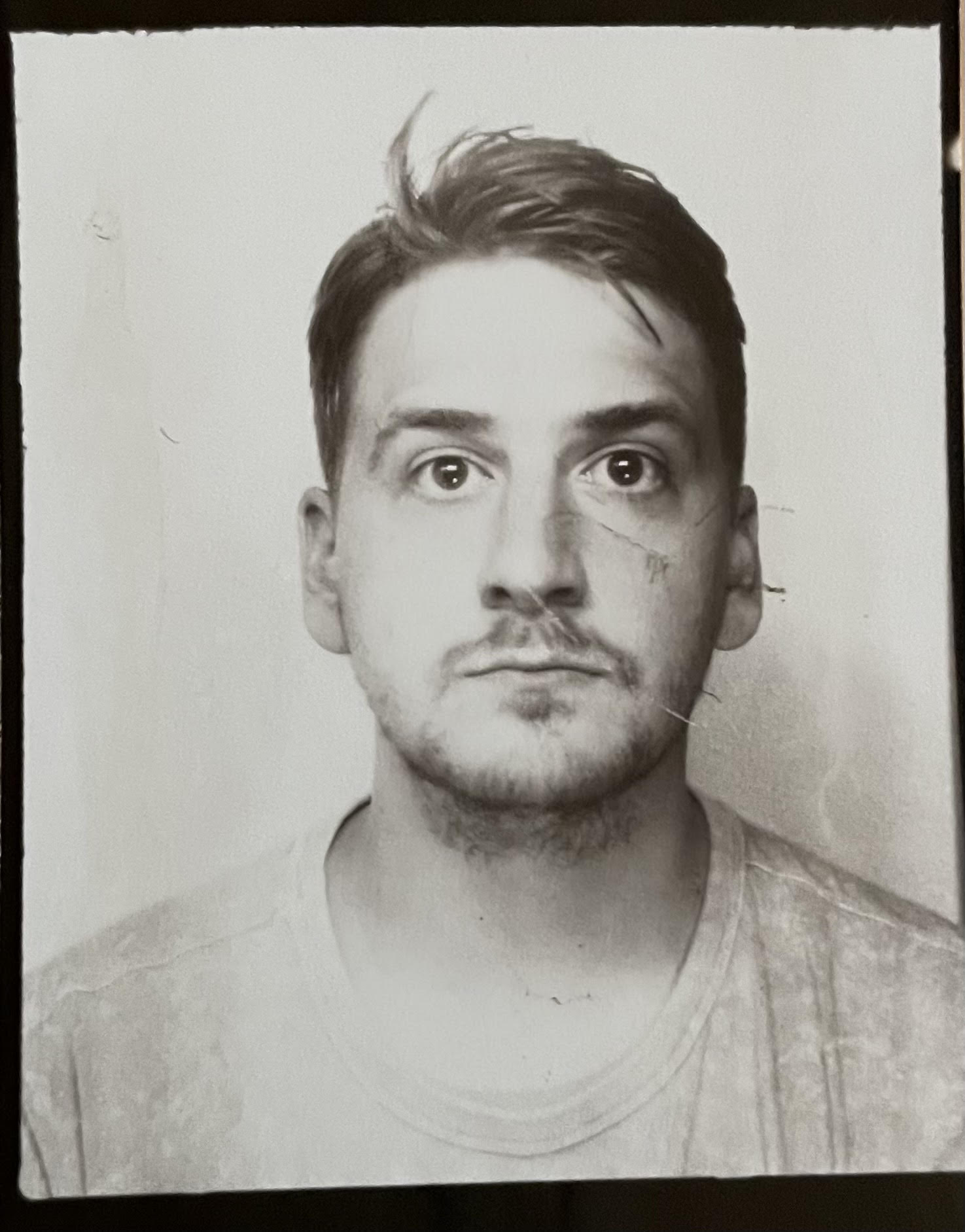Missouri Williams's debut novel is a macabre epic that interrogates the shadow cast by a family's unyielding desire to persist. Maximal and thoroughly bizarre, The Doloriad marks Williams as a new voice that demands attention. The following interview was conducted via email.
—Nathan Stormer

TriQuarterly: I want to start with a book recommendation you gave me, Satantango by Làszlò Krasznahorkai. Reading it I immediately felt a connection between the narrative voice of that book and your book. How did the voice for The Doloriad come about?
Missouri Williams: Writing the book was something really unexpected for me. I’d never seen myself as someone who would write a novel—I wanted to write plays and make films. But I started writing The Doloriad after two events that distanced me from my everyday reality and speech. First, I moved to a new city with a new language, and began to learn it at once. I worked in a cafe and could only say simple sentences. I spent a lot of time getting orders wrong, being reprimanded without quite understanding why. It was useful to feel so stupid. It made me more humble. The second thing that happened was that I began to have seizures and was diagnosed with epilepsy. It felt as if they'd wrecked my brain. I forgot words, said sentences backwards. Everything suggested everything else in the strangest of ways. I couldn’t seem to hold onto my thoughts, and I suddenly understood how provisional my relationship to language was, how little control I had over my mind and memories. For me, The Doloriad is a reflection of that uncertainty: the way the sentences fit together and follow on from one another is both an aggressive mirroring of and a response to doubt, extreme doubt. Everyone is constantly trying to fix things in place while questioning them at the same time. I feel a lot of kinship to writers like Krasznahorkai for that reason—I don’t think he takes anything for granted and the way he writes belongs to that, everything is a kind of relentless circling. I’m a real fan of Bernhard too. But the thinker I am most drawn to is and has always been Descartes. I feel as if doubt and skepticism inform every single thing I do. I was obsessive even before I started having seizures, but those traits became more intense afterwards. When I tried to write again, it was like The Doloriad was a thing waiting to be discovered. My style felt fully formed. I think all style arises out of a condition of being.
TQ: Speaking of aggressive mirroring, the children watch a cartoon in which Thomas Aquinas and his sidekick sheep traverse a bleak landscape that often mirrors the world of the characters, bleeding into their reality. There's a general pattern of things being separated only thinly, by one degree or so. What draws you to this separation?
MW: One of the first plays I ever read was Marlowe’s Doctor Faustus, and I remember being so blown away by the comic interludes where clowns and minor characters have arguments or interactions that double as commentary on the main action. I thought that was so clever. Ever since then I’ve loved things that can fracture and come together again, sequences of stories or parallel adventures where patterns and connections only become evident over time and people speak the truth in veiled ways, through stories of their own. The only story in The Doloriad that doesn’t involve Aquinas—the one that Agathe tells Jakub—is a reworking of one of the tales in Giovanni Boccaccio’s Decameron that the Matriarch has told the children as a way of indirectly defending her own actions. Jan Potocki’s The Manuscript Found in Saragossa, which is full of interlocking stories that eventually overwhelm the frame story, is one of my favorite books. It’s a pattern that feels natural to my way of thinking, too. It’s as if nothing in this world is really that separate, and it’s also as if what is true can only be approached obliquely. I like to bring things together, to use one thing to look at another.
TQ: Fracture and reassembly is kind of the driving force of the whole novel, but not just as a structural element. There’s kind of an askew sense of optimism and hope for life to continue. Why do you think The Matriarch decided to persist in the face of annihilation?
MW: Why does anyone? I think she has hope. Maybe her hope is misplaced, but she can’t help having it. I also think that she believes in the possibility of love, that the disaster can give her something she’s always lacked. The problem is that she only believes in a very specific kind of life, human life, and she’s also an egotist. The children, especially Agathe and Dolores, are more open to other possibilities: they think about objects and animals and strange powers, and the schoolmaster does too—there’s that sequence where he crawls through the dead city and thinks that it isn’t dead after all, but full of a life they refuse to recognize, the lives of the abandoned objects. He perceives this as a threat, but the point is that he sees it, he acknowledges it. The Matriarch’s tragedy is that she cannot compromise.
TQ: Why Thomas Aquinas?
MW: I’ve always loved theologians. I had a teacher once who would present a theological quandary, like some problem of faith, and then he would solve it by turning to Aquinas. I was very young at the time and this made a huge impression on me. After that I always saw Aquinas as the great problem-solver, but also for some reason as friendly and approachable. When I got older I read Étienne Gilson’s Reason and Revelation in the Middle Ages, which is one of the most beautiful books ever written, and the final chapter is about how Aquinas resolves the conflict between the two terms of the title, reason and revelation. Gilson describes Aquinas as the kind of person who ‘simply could not help putting everything in its proper place.’ That image stuck with me. But in the world of The Doloriad Aquinas is only ever a future promise. In the characters’ present there is no reconciliation between the two, except maybe at the novel’s end.
TQ: There is a cinematic quality to the narration. I took a note while reading that said something like "as if the reader's eye is a camera panning across a Bosch painting." You're an editor for Another Gaze journal, which focuses on films by women and queer filmmakers, protagonists and spectators. How does your relationship with film inform your writing?
MW: That’s interesting. I think film definitely informs my writing. In film objects and animals really come into their own as bearers of meaning, but are also irreducibly themselves. They can compete for our attention. The filmmaker can choose what to include and exclude but for the most part they can’t do away with this sense of a fullness of world. This is impossible to replicate in writing, of course, but I did want to try and create something of that detached, disembodied presence, moments of pretending to see without subjectivity. It was also important to me to try and honor the way film upsets hierarchies, to allow objects and things to be both mirrors and more than mirrors, to become enigmatic concentrations of force in their own right. I wanted there to be something very bright and very flat about The Doloriad, and to try and present things as they might be, everything on a more-or-less level plane, even if it’s a lie.
TQ: I think you definitely achieved that. The voice is controlled, but also simmers around its own gaze so violently. It harkens back to what you said about Krasznahorkai not taking anything for granted. That relentless circling. It’s an approach to voice that seems very apart from many books being published now. Do you read much contemporary fiction?
MW: I do! I really like the work of Olga Tokarczuk, Fernanda Melchor, Olga Ravn, and Claire-Louise Bennett, to name just a few writers. I think it’s strange when people don’t read the books that are contemporary to them—we’re all part of the same moment, and no matter how differently people respond it’s always interesting to observe it. I’m glad you think my voice is distinct, but I do feel part of something too.
TQ: Not to give too much credence to genre, but The Doloriad is billed as dystopian fiction, which, of course it is, but the book is more focused on the domestic drama and culture of a family. Why was "the cataclysm" important to tell this story?
MW: For me, almost every family begins with a catastrophe, the catastrophe of the one that came before it. The Matriarch thinks she can fix the family she’s left behind by building a new one of her own. She responds to one disaster by creating another. It was important to me to have the two catastrophes running alongside one another, and for both to be equally mysterious. We learn very little about the cataclysm that has emptied the world, and the same goes for the family that the Matriarch and the uncle escaped when they moved to the city. Both are interpreted by the Matriarch as cleansing events, as mythical beginnings. She wants to forget the past and move on, but she can’t because she’s never addressed the problem. Their reality has been pushed off course by something and she pretends to embrace it. But she doesn’t understand it. The only thing that’s obvious is that one deep unhappiness follows on from another.
Above all, I wanted to explore how the family can be a kind of prison, how the isolation and misery it imposes upon its members can follow them for the rest of their lives. It doesn’t matter how dramatic the new beginning is, whether it’s a new city or a razed world, the Matriarch is still the same person. The emphasis she places on the survival of the species is a reflection of her blindness and arrogance. The emptiness of the world around them is also the absence of the possibility for change. When writing The Doloriad, I was interested in extreme metaphor.
TQ: I've read some of your critical work, which is just as carefully contemplated as your novel, but do you write in any other forms?
MW: The first things I ever wrote were plays. I really loved doing that, and maybe I will again in the future. Right now, I’m very interested in short stories, in precision and control. I want to write stories that are contained yet abyssal, with steep drops and sudden changes of scenery. I like the license the form gives you to think on the level of the sentence, to take mad risks. It’s fun to be a miniaturist, especially because The Doloriad is so maximalist, with everything constantly in motion.
TQ: The book reads like an ancient origin story and a highly contemporary absurdist comedy—both held in equal regard. You juggle so many different narrative tropes, maintaining a balance between them all. Where did this book start for you? Where does writing start for you
MW: It’s so hard to say. This book started at the beginning, with Dolores in the wheelbarrow wanting to be obliging but at the same time revealing something hopelessly unchangeable about herself. She tries to acknowledge her uncle, but her body is so big and unwieldy and the wheelbarrow so precarious that even this slight movement pushes everything off balance. It’s a difficult, hostile image, but I feel as if on some level it characterizes the whole book, everyone trying to do their best but being let down in some fundamental way by their own nature. The Matriarch covers up the mistake that leads to the downfall of the family as a miscalculation, but it’s really the same thing: an accident of nature. She can’t help having some hope; she can’t help seeing the world as something to be bettered. So I suppose this book started with an image, but it was an image that contained everything else. All of the different tropes I reached for and all of the different voices I employed were in service of that first image and what it contained.
TQ: Similar to one of Agathe’s visions?
MW: I’ve always identified more strongly with the schoolmaster and his quest to build the perfect mound. Once he’s satisfied with his creation, everything else will end. I feel the same way.



